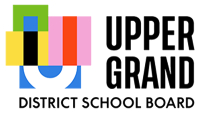Dress Codes for Students
The Upper Grand District School Board’s philosophy on Student Dress Codes
It is the policy of the Upper Grand District School Board to ensure a safe and inclusive learning and working environment for all students, staff and the community, regardless of age, ancestry, colour, race, citizenship, ethnic origin, place of origin, creed, disability, family status, marital status, gender identity, gender expression, socio-economic status, employment, housing, sex, and sexual orientation (Policy 504 Equity and Inclusive Education).
The UGDSB’s student dress code philosophy is one way that we are working to ensure safe, inclusive and equitable learning environments for all of our students. Schools need to be able to focus on teaching and learning without undue emphasis on monitoring dress code infractions. Dress codes must be presented in a manner that does not reinforce stereotypes. We believe that students have a right to learn in a safe and caring space that is free of bias and discrimination, and that students have a right to respectfully express their individuality. To ensure that our learning environments are safe and respectful spaces, our board has adopted a shared set of guidelines for student dress (listed below).
UGDSB school principals, in consultation with their school council, staff and students, shall determine a dress code for their students. Schools are encouraged to create a dress code that is based on the board’s dress code philosophy, values and guidelines.
Our values and beliefs:
All students should be able to dress for school without fear of unnecessary discipline, body shaming, bias or discrimination.
Individuals are responsible for managing their own personal biases and or perspectives/opinions (distractions) related to others’ choices of clothing.
All students are treated equitably regardless of their race, age, ability, sex, gender identity, gender expression, sexual orientation, ethnicity, religion, cultural observance, socio-economic circumstances, or body type/size.
Students have a right to wear clothing of their choice that expresses their self-identified gender.
Students have a right to wear religious attire without fear of discipline or discrimination.
Guidelines for school dress codes:
Dress codes must avoid using language that reinforces stereotypes.
Student dress code enforcement must not result in unnecessary barriers to school attendance.
Courses that include attire as part of the curriculum (for example, public speaking and job readiness) may include assignment-specific dress. Schools need to be aware that there may be diverse culturally-specific attire that would also meet the requirements of a course.
Schools must maintain a safe learning environment in classes where protective or supportive clothing is required. For example, activity-specific shoe requirements are permitted (e.g., athletic shoes for Physical Education).
Dress codes must prevent students from wearing clothing or accessories that display (but are not limited to) the following: Images, logos or language that portray, ethnic prejudice, racism, sexism, vulgarity, gang-related markings, obscenities, profanity, hate speech, and/or pornography.
Dress codes must prevent students from wearing clothing or accessories that denote, suggest, display or reference alcohol, drugs or related paraphernalia, or other illegal conduct or activities.
Dress codes must prevent students from wearing clothing that exposes genitals, buttocks, and breasts.
School staff need to be able to explain the dress code and address dress code infractions without using body-shaming language.
All UGDSB school principals have been provided with a template based on this philosophy, which they may use when developing their school’s student dress code.
